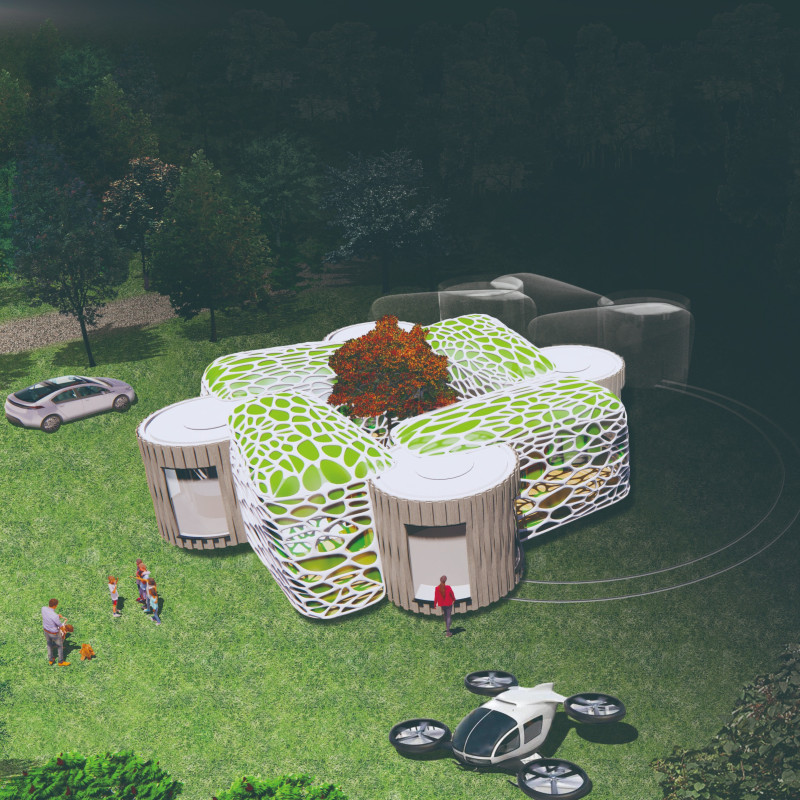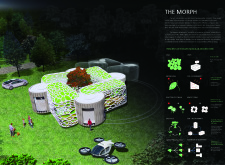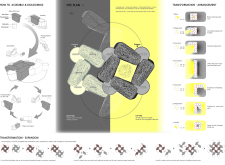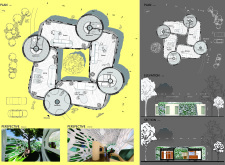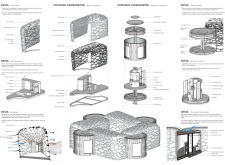5 key facts about this project
Modular Design and Adaptability
The Morph stands out due to its modular configuration, allowing each unit to function independently while contributing to a cohesive living environment. This flexibility is achieved through transformative spaces, where walls and furniture can be repositioned to cater to various activities throughout the day, from social events to solitary work. The project incorporates structural elements that support this kinetic design, emphasizing the potential for reconfiguration as user needs change over time.
Sustainability Features
The design integrates various sustainability elements that reduce reliance on external resources. Notably, the use of low-E insulated glass and BIPV (Building Integrated Photovoltaics) panels contributes to energy efficiency. Rainwater collection and purification systems are also incorporated, protecting the local water ecosystem while promoting self-sufficiency. Natural ventilation strategies enhance indoor air quality, further reducing energy consumption. The materials choice reflects an intention to align the project with a lifecycle approach, ensuring that every aspect can be adapted or reused as necessary.
For a more comprehensive understanding of The Morph, including architectural plans, sections, and design elements, interested readers are encouraged to explore the project presentation further. This exploration can provide deeper insights into the architectural ideas and innovative solutions that define this unique residential project.


